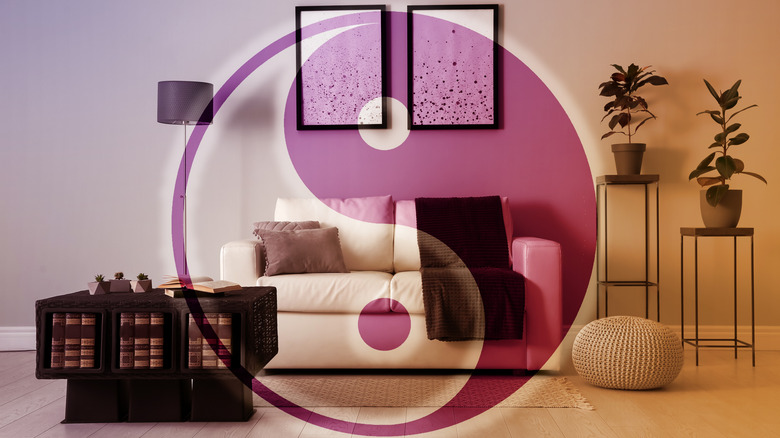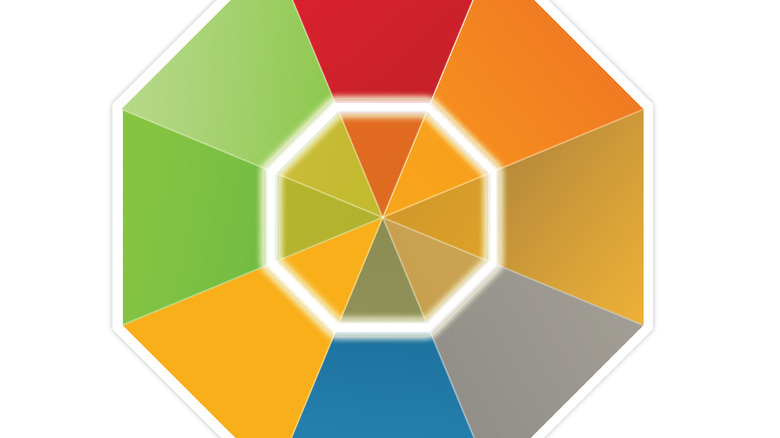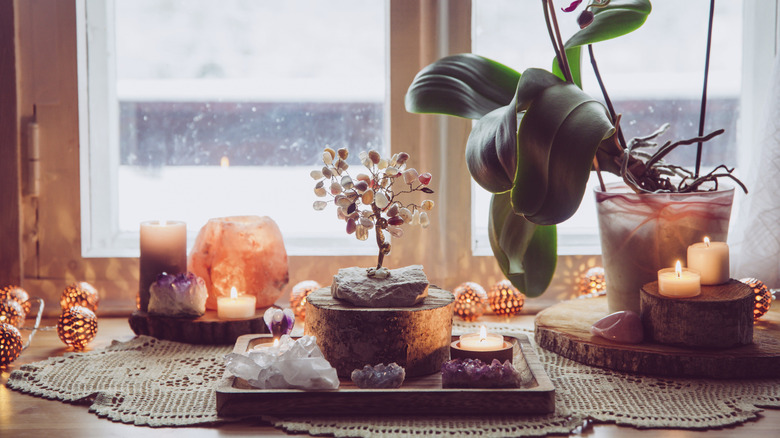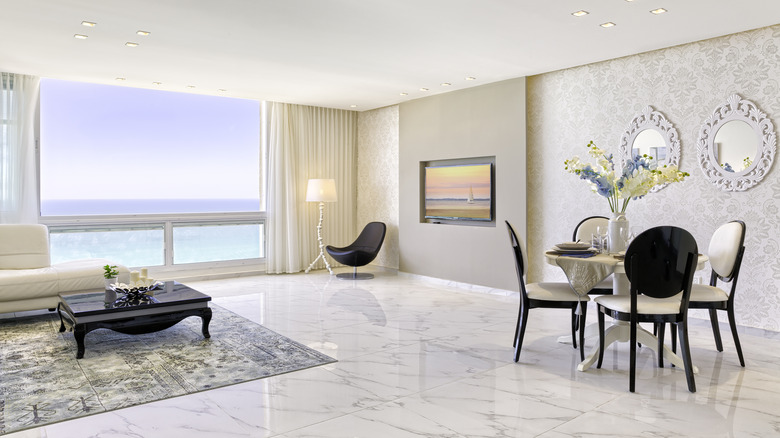Where To Place The Feng Shui Elements In Your Home
Feng shui is the art and practice of arranging rooms and items within those rooms to create perfect harmony. National Geographic explains that this practice is a system rooted in Taoism, and the primary concept is the idea of chi or life energy that inhabits every living thing. Chi is the balance between two opposing forces: dark and light, female (yin) and male (yang). Harmonious balance is achieved by skillfully placing furniture, accessories, plants, and color throughout the rooms in your house or apartment, even your office. It's also important not to block the flow of chi throughout the home.
Traditionally a Chinese practice, feng shui now has reached even the farthest east and west regions. As The Guardian points out, there are places in the world, such as Hong Kong, for example, where hardly anything is built without consulting a feng shui master. That's not so much the case in western culture, although experts in have repeatedly written in Psychology Today and other publications that interior spaces, their colors, and details impact not only our mood but our overall well-being. Consequently, any system that helps us get a handle on how to place our things and help create the calming spaces we enjoy is welcome. Using this very basic primer, diving into it may be the best way to understand feng shui principles for your interior.
Step one, a map
The first part of placing objects using feng shui is to create a bagua, or map of the interior. For example, Feng Shui Manhattan has a step-by-step process to chart your first floor from the entrance to the furthest corners. Then, using the bagua, the interior is separated into eight sections, each one ruling a different aspect of life from career to family, spirituality to creativity.
The elements of feng shui don't stand alone — they are interconnected, moving around each other with a purpose, a relationship. Western beliefs point to four elements, namely water, fire, earth, and air, but the Chinese system has water, wood, fire, earth, and metal. Not to oversimplify, but the elements flow in a circle, as One World Nations Online describes. Water gives life to wood. Wood becomes fire, which the earth absorbs. Metals are found inside the earth, and metal enriches the water. This is just one of the feng shui cycles related to seasons, astrology, personality types, and more.
Once the map is in place, remember that this is a series of suggestions or ideas. If your space doesn't immediately match what feng shui principles prescribe, there are many ways to introduce elements, bring feng shui concepts into action, and create harmony and balance throughout the interior.
Element by element
Water represents relaxation and inspiration. You can bring this element into the room with actual water, such as table fountains or aquariums, or by using curved furniture, but Feng Shui For Real Life recommends using soothing blues in the northern area of the map, as they will bring the water element into a space. Black is also linked to the water element and it is a great color for furniture and accessories. Think of black leather furniture or accents made from onyx.
Feng Shui Tricks indicates that the earth element shows up in colors from beige to yellow. Earth's meaning is reliability, being centered and balanced. Having it on your side might work best for the bagua sections related to relationships or family matters. Objects found or made from earth-centric things such as crystals, brick, sand, or rocks may enhance the strength of this element. Better yet, consider using this element's colors to bring balance to the room.
Metal as an element is a bit mysterious to western thinking. It is related to air and wind, but it is also associated with the earth. Its colors range from light blue and silver to gray. Metal influences productivity and encourages simplifying and organizing per Peace.Love.FengShui, and can be placed anywhere in the home. Add anything in a round shape to bring in this element. Mirrors are important items, especially round ones. Also, consider decorative items from lamps to photo frames in a metal finish — silver, bronze or copper.
Wood and fire elements
The wood element is represented by both green and brown. Simple enough, just think of large tree trunks in a forest. And then think of anything that grows vertically. Consider including pillars, rectangular mirrors, or anything that seems tall in your décor. As pointed out by Luminous Spaces, wood represents growth, activity, and health, and you can introduce this element by painting a bagua map eastern wall green or light green. But more, add plants and pots of flowers and herbs, and anything that agrees to grow there. Also, consider furniture and accent pieces made from wood.
Sometimes identified as the most powerful element, fire is represented by red and orange. Feng Shui Nexus describes the fire element as having a triangular shape. Its direction is south, and its qualities are passion and illumination. If you want to bring energy to a space, use this fiery element literally by adding a fireplace or firepit. If that's not possible, try adding candles instead. Fire can also be represented by lighting — think how a wall sconce mimics a torch or how a chandelier represents a central fire or gathering place. Use the colors red and orange to ignite the space visually in the furniture, throws, or artwork.
Aim for balance
We mentioned that feng shui masters are often brought into homes to consult, but they are also regularly asked to advise on larger projects such as apartment buildings and hotels. In the west, any destination hotel that dismisses feng shui practices does that at their peril since many Chinese-based tourists look for the harmony and balance that feng shui interiors — and exteriors — offer to guests. Boston University has an excellent overview of how this ancient practice is incorporated into the hospitality business. This sketch also works as an excellent guide for a homeowner or apartment dweller who wants to introduce feng shui into their living space.
Feng shui is somewhat accommodating — the rules are interpreted. So when suggesting the wood element with green, for example, think beyond the basic color to include teal, olive, or chartreuse. A wall doesn't have to be a solid color but instead could be a wallpaper with a botanical print. A large green rug might be hard to live with year-round, so instead, bring the wood energy into the room with accents — pillows, lampshades, and window treatments in green hues. This flexibility goes for all the elements to create an interior that speaks to and welcomes you.




